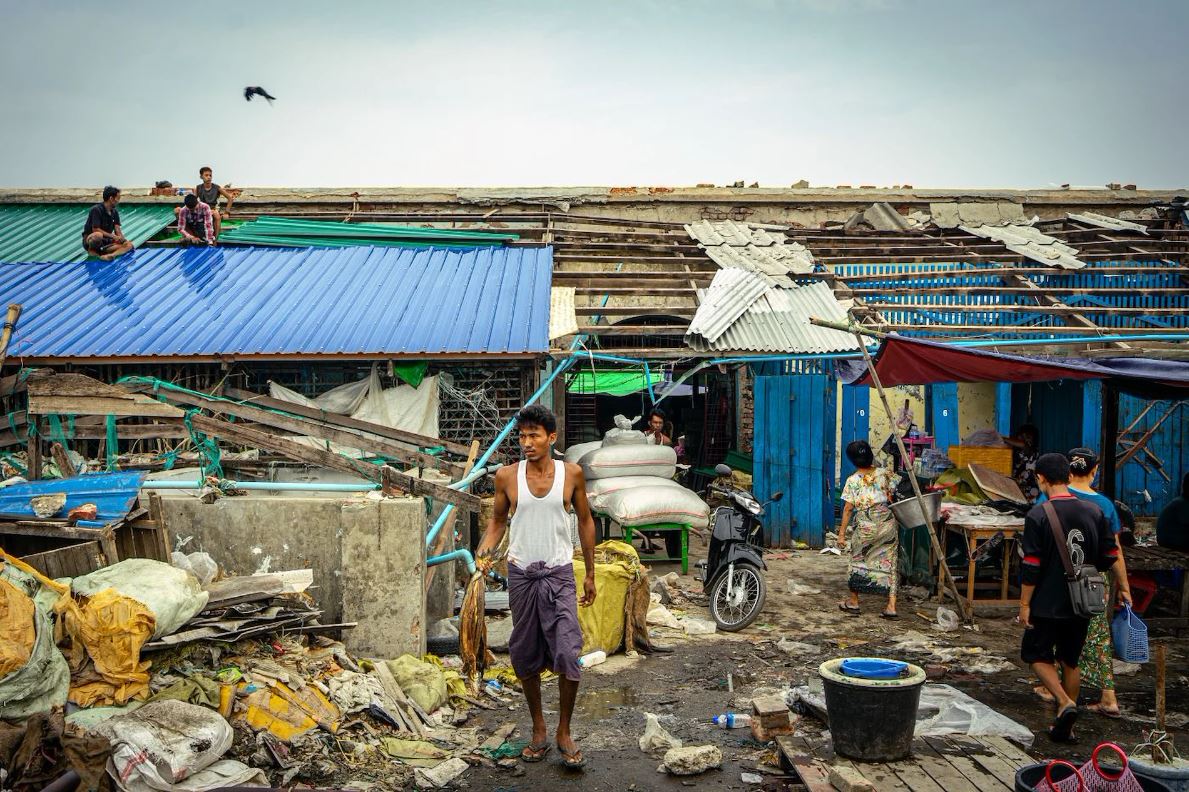UNDP's report points to a disappearing middle class amidst deepening poverty, with vulnerable populations, particularly women and children, hardest hit. Urges immediate international support to Myanmar households

The report underscores an urgent need for international support tailored to the specific needs of various communities, in both urban and rural areas across all parts of the country.
New York – Myanmar's middle class has shrunk by 50 percent over the past three years, coupled with a surge in poverty, amidst widespread insecurity and conflict, as well as a dire economic crisis, according to a new report released today by the United Nations Development Programme (UNDP).
The report, titled "Poverty and the Household Economy of Myanmar: A Disappearing Middle Class", reveals the profound impact of ongoing challenges exacerbated since the military takeover in February 2021. Seventy-six (76) percent of the population lives below or perilously close to a subsistence existence and poverty rates have almost doubled from 24.8 percent in 2017 to 49.7 percent in 2023, while foreign direct investments have plummeted.
The protracted recession has taken a heavy toll across Myanmar's economy, which is yet to recover in any significant way since the severe contraction of - 17.9 percent in GDP in 2021. A middle class that can buffer shocks and help a country recover faster, is rapidly eroding, with a fall back into poverty. The report estimates that $4 billion per year would now be required to effectively address this swell of poverty, via cash transfers and other means.
“The new data show that less than 25% of the population in Myanmar manage to secure steady incomes to live above the poverty line. Without immediate interventions to provide cash transfers, food security and access to basic services, vulnerability will keep growing, and impacts will be felt across generations” said UNDP Administrator Achim Steiner. “We call on all stakeholders - inside and outside Myanmar - to take action and preserve vulnerable households from slipping into irreversible poverty and despair” he added.
The report polled over 12,000 households across Myanmar, one of the largest nationwide surveys conducted in recent years, finding that most families and households have been forced to resort to various, often unsustainable, coping mechanisms like cutting healthcare and education expenses, depleting savings, borrowing, and eating less.
The brunt of the crisis disproportionately falls on women, children, and people living in conflict areas. The data shows an increasing feminization of poverty, where women-headed households are 1.2 times more likely than male-headed households to live in poverty. Rising poverty and education costs have forced low-income households to allot just two percent of their resources towards schooling. With over half of Myanmar’s children living below the poverty line, the crisis poses a threat to the country’s future brain trust and impacting on capabilities for generations.
The report points to a middle class hanging by a thread. Once the driver of Myanmar’s rise as one of the fastest-emerging economies in the Asia-Pacific region, it is being eroded by stagnant wages, limited mobility and deteriorating labour market conditions. For half of the households surveyed, the situation has been compounded by the loss of secondary incomes – an economic lifeline that allowed many families to maintain their socioeconomic status. Moreover, the crowding out of investments in human capital, such as in health and education, undermines future generations. Money for basic needs to simply survive, takes precedence.
Internal regional disparities further exacerbate Myanmar's crisis. Conflict-ridden areas show heightened poverty levels attributed to factors such as the destruction of homes, restricted access to farmlands, and an increase in internally displaced populations, all leading to deepening instability and economic hardship. The states with the highest rates of non-secondary income – Kayah (67%), Chin (63%), and Sagaing (57%) – which are also experiencing high levels of conflict, report the lowest income per capita.
Moreover, poverty is now spreading into urban areas, affecting once-affluent areas such as Yangon and Mandalay. Even the relatively well-off are struggling, with 75 percent resorting to negative coping mechanisms. The report underscores an urgent need for international support tailored to the specific needs of various communities, in both urban and rural areas across all parts of the country. “This alarming data and voices represented here, shows how widespread the combined impact of the conflict and economic crisis is; and hence that support needs to reach all vulnerable communities wherever they are”, Kanni Wignaraja, UNDP Regional Director for Asia and the Pacific affirmed, emphasizing that “localized, area-based programmes that are designed for specific micro contexts can go a long way to help the people of Myanmar.”
Media contacts
For more information or to request an interview, contact:
In New York City: raul.de.mora@undp.org (+1 631 464 86 17)
In Bangkok: cedric.monteiro@undp.org (+66 2 304 9100)
DATA POINTS:
- Poverty headcount as a percentage of the population has doubled from 2017 to 2023, from 24.8% to 49.7%, almost half of the population. An additional 25% of the population are hanging by a thread.
- Only the top 20% of the population as measured by assets, reported a higher income per capita. However, this income remains well below what would be required for a middle-class standard of living.
- More people, over 76% of the population, are falling into poverty or facing subsistence insecurity.
- Half of all households lack a secondary income source. Women-headed households are 1.2 times more likely to live in poverty compared to households headed by men, as indicated by regression models.
- Foreign Direct Investment (FDI) commitments dropped below USD 2 billion in 2021, compared to levels exceeding USD 5 billion in 2017. Despite a slight recovery in 2022-23, average annual FDI commitments remain significantly lower than in previous years.
- Kayah State recorded the highest percentage of households experiencing income declines at 50%. Sagaing, Tanintharyi, and Rakhine also saw significant drops, with 40%, 37%, and 36% of households affected, respectively.

 Locations
Locations


